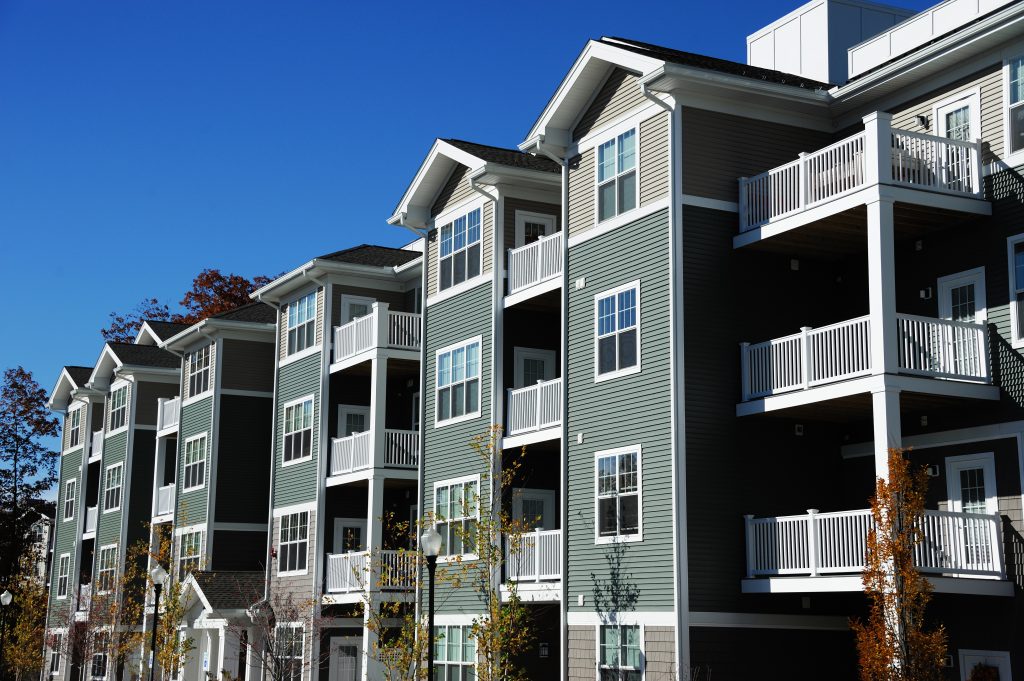
Investing in multifamily real estate is a great way to diversify your investment portfolio beyond stocks, bonds, and mutual funds. Returns generated from multifamily real estate are uncorrelated to the public markets and the volatility you see in the daily pricing of securities.
Many people shy away from multifamily investments because they don’t want to be landlords. What you may not know is that there are many ways to invest in this sector, and you don’t have to become a landlord to do it.
What is multifamily investing?
Multifamily investing is a strategy where you invest in properties with multiple housing units, such as apartment buildings or townhouses. Each unit typically has its own kitchen and bathroom, although there are some exceptions, like apartment complexes with microunits that share a kitchen.
Multifamily properties can fall under two different categories: residential real estate and commercial real estate. Duplexes, triplexes, and quadruplexes are generally considered residential real estate for financing purposes, while properties with more units are often financed as commercial real estate.
Is a multifamily property a good investment?

Real estate, especially multifamily properties, can be a great way to build wealth and generate tax advantaged, passive income.
Institutional investors have long understood the merits of holding commercial real estate in their portfolios. In fact, most endowments, pension funds, and asset managers allocate a significant portion of their investment portfolio to multifamily real estate. They have relied on this asset class to bolster portfolio returns, balance market uncertainty, and generate tax advantaged passive income.
According to research cited in a 2018 report by CBRE, the world’s largest commercial real estate investment firm, multifamily real estate provided the highest average annual total returns (9.75%) of any commercial real estate sector with the second-lowest level of volatility between 1992 and 2017. That statistic alone may be enough reason to consider investing in multifamily real estate.
There are a few other trends and factors that make multifamily housing, especially workforce housing, a wise investment choice:
- Millennials are continuing to place a strong demand on rental properties. Renting is the most common form of housing for the largest generation in U.S. history, partially because rising home prices have put homeownership farther out of reach for many people of this generation.
- Many baby boomers are shifting from home ownership to renting. Homeownership comes with ongoing maintenance, and many older adults are looking for more hassle-free living options in amenity-rich communities.
- Data suggests the demand for workforce housing is increasing. Workforce housing includes properties that appeal to middle-income families. While construction of Class A properties that appeal to high-income individuals has increased in recent years, there is a shortage of new workforce housing units. Supply is not keeping up with demand.
- Multifamily investors often enjoy better terms for funding than investors in other parts of the commercial real estate market. 2017 research from Real Capital Analytics found that the typical mortgage rate for multifamily was about half a percent lower than the typical rate for the overall commercial real estate sector.
- Multifamily housing will always be needed. No matter what state the economy is in, people need a place to live. There is a baseline level of demand for most types of multifamily assets, especially workforce housing.
How do I start multifamily investing?

There are several different ways to get started in multifamily real estate. For many people, the most obvious option is to buy a duplex or triplex and rent the units out for income.
However, there are a few drawbacks to the duplex strategy. First, you need to amass a significant amount of capital to meet the down payment required to acquire the property. Second, you will become an active investor and need to devote a lot of time to being the landlord even if you hire a property manager to help you, which will eat into your profits.
An easier option is to buy into a real estate investment trust (REIT). A REIT is a type of publicly traded company that owns and operates commercial real estate. The process of buying a REIT is very similar to buying a stock or mutual fund, and you will not be expected to do hands-on property management tasks.
Investing in a REIT is a way to “diversify” into real estate. However, when you invest in a REIT, you do not actually own real estate, but rather you own a share of stock in a company that is in the real estate business. So you are right back to dealing with the volatility of the public markets.
A third option is to invest with a private equity real estate firm. In this strategy, you pool capital with other investors through a private equity firm to purchase one or more properties together as a group. You take a passive position in the investment, and the sponsor manages the investment and operates the real estate on behalf of the investment group. The investment strategy and risk level vary among sponsors.
Private equity firms allow you to make direct investments in commercial real estate. You can select a sponsor whose strategy you believe in and make an investment into a single asset entity that buys one specific asset, or you can invest in a fund they operate and end up owning an interest in multiple properties owned by the fund.
Investing alongside a sponsor is a great way to diversify into real estate. Investment amounts are typically lower because you are pooling your capital with others who join the investment group. In most cases, you must be an accredited investor to invest with a real estate sponsor.
Ready to learn more about multifamily investing?
Check out the CEP multifamily blog for more information about real estate, multifamily investing, industry news, and more. You can also sign up for our newsletter to receive future insights from us.









